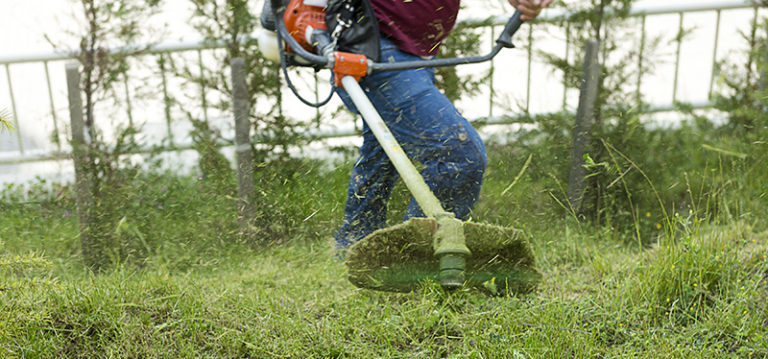Fall is an excellent time to tackle that summer project you have been putting off all season: building a deck. Whether you are building a new deck from scratch, expanding a current deck, or looking for a change in your current deck, the first step is choosing a deck material.
There are several varieties of decking, each with its benefits and drawbacks. Some purists swear by wood materials only, but alternative types have come a long way to create a look and feel comparable to wood. From solid wood to composite materials, our guide will give you insight into each material and which type best fits your needs.
Wood Vs. Composite

Wood versus composite decking is a heated debate among homeowners and a valid one. Much of the discussion comes down to cost, maintenance, and appearance. Wood decking is broken into two categories – pressure-treated and untreated lumber. Pressure-treating enhances the wood’s ability to resist mold, mildew, and climate changes, making it less likely to face rotting. Untreated lumber consists of wood naturally resistant to rotting and does not use chemicals injected into it to preserve the finish. Composite boards are made of recycled plastic and recycled wood fibers.
Cost
Because of the many varieties of wood, the price range for the material is significant. Pressure-treated lumber is commonly the least expensive of any decking, but some natural wood styles can get pricey. Composite decking is a more expensive option than most woods because of how it is manufactured and its longevity. However, the cost could be the same as that of wood because of the lack of maintenance involved with composite materials.
Maintenance

Natural wood can last for many years, but it requires a lot of yearly maintenance to achieve that longevity. The level of maintenance depends on the type of wood material chosen, but you can expect regular staining, sanding, and sealing treatment to keep them looking new. Composite materials are almost maintenance-free, requiring the occasional rinse and scrub. The only worry is the wearing down of boards, but the piece can be replaced if needed.
Appearance
Appearance is more of a preference-based debate. Purists prefer the natural, outdoor appearance that blends into its surroundings. Natural wood can also be stained in whatever color you like to match the exterior of your home best. Composite decking is limited in available colors and sometimes appears duller than natural wood.
Types of Deck Material
Many diverse types of decking materials are on the market, but most choose from our Acme Tools five main categories for their patio.
Pressure Treated
Pressure-treated decking is one of the most popular materials, mainly because of its durability and low cost. This type of material is best for areas of high foot traffic. Due to the chemicals used to treat the wood, stainless steel fasteners should be used to avoid corrosion.
Pros:
- Resists rot and termites when treated with stain or sealer.
- Easier to stain.
- Inexpensive.
Cons:
- It can turn a green tint if not consistently stained.
- More susceptible to splintering or splitting.
Exotic Hardwoods
These types of wood, such as Ipe, Tigerwood, and Mahogany, are incredibly dense, making them more resistant to termites or rot. That density can also be a drawback, as they are harder to work with because they are tough.
Pros:
- One of the longest-lasting wood materials.
- Resistant to insects and decay.
Cons:
- One of the most expensive materials.
- It is tricky to nail through.
Redwood & Cedar

A step above pressure-treated wood, cedar, and redwood materials have a natural resistance to insects and rot. They are both lights, making them easier to work with, but that comes with one drawback.
Both kinds of wood are lighter because they are soft, so they can be easily damaged by heavy foot traffic.
Pros:
- Lightweight and easy to stain.
- Resistant to rot and insects.
- Rarely warps or splits.
Cons:
- More susceptible to damage from foot traffic.
- It can be costly for larger decks.
Composite
Composite materials are designed to look like natural wood in assorted colors. They are made by combining a blend of plastic and wood fibers. This material will never splinter and does not need to be stained, so they are maintenance-free.
Pros:
- It does not need to be stained or sealed.
- Won’ split or warp.
- Last 25 years or longer.
Cons:
- Less attractive than natural wood.
- Expensive up-front cost.
PVC

PVC, or vinyl, decking is made entirely of plastic, which makes it more durable than composite decking. Due to the design, PVC vinyl requires almost zero maintenance other than occasional cleaning. The fastening system for PVC is complex, making it more difficult to install and can lead to squeaking when you walk on it.
Pros:
Exceptionally durable and long-lasting.
Commonly recyclable.
Available in many styles to fit your home.
Cons:
- It can get expensive.
- More challenging to install.





One Comment
Olivia Smart
January 16, 2023 at 12:30 pmThank you for pointing out how composite can last for upwards of 25 years. I’ve been wondering what kind of material we should be using for the deck we hope to build this year. I’ll be sure to share this with my husband since I don’t think he considered this one before.